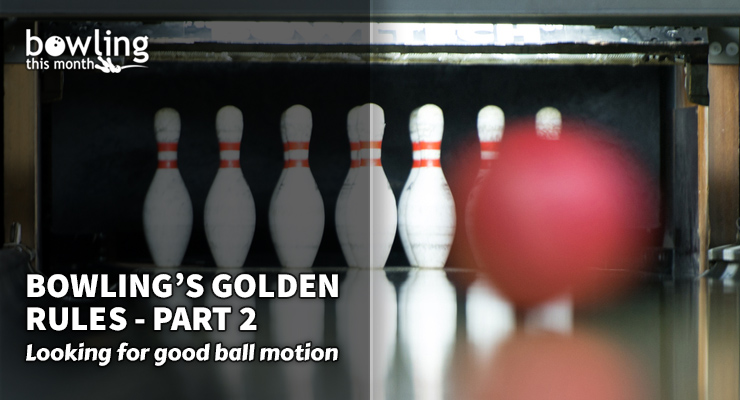Article Contents
- 1. What is bad ball motion?
- 2. Improving observation skills
- 2.1. The science of the standing pins
- 2.2. Ball motion in the last third of the lane
- 2.3. Ball motion in the midlane
- 2.4. Ball motion in the first 20 feet
- 2.5. Putting it together
- 3. Conclusion
Note: This article is only available to Bowling This Month subscribers.
In my last article, we discussed the importance of fit as one of the four “golden rules” of bowling. This month, we’ll look at another one of the golden rules: you can’t out-score bad ball motion.
No matter how good your shot was from a physical and mental aspect, you won’t strike if your ball motion isn’t good. Let’s look at an example:
- Your pre-shot routine was perfect.
- Your approach timing and release timing were right on.
- Your finish position at the foul line was balanced and solid.
- The shot felt pure off your hand.
With all these items checked off the list, it’s impossible to not strike, right? Well it actually is possible. Sometimes, you leave a corner pin. Even worse, sometimes you leave a split. What happened? One minute you are making the perfect shot, and the next minute that pesky single pin is still there, or you’re looking at an open frame.
What is bad ball motion?
It would be very difficult to try to describe and define bad ball motion, because there are so many types. Let’s turn the question on its head. You can only score with good ball motion, and you’ll soon see there’s really only one type. Plus, this is a much better and a more positive way to view things. Now we ask the question:
What is good ball motion?
Good ball motion should be defined as this: when a ball travels down the lane and through the pins and gets the correct deflection to allow it to exit the lane at the correct point. If you can achieve this, ...
Already a premium member? Click here to log in.


 (Only
(Only 